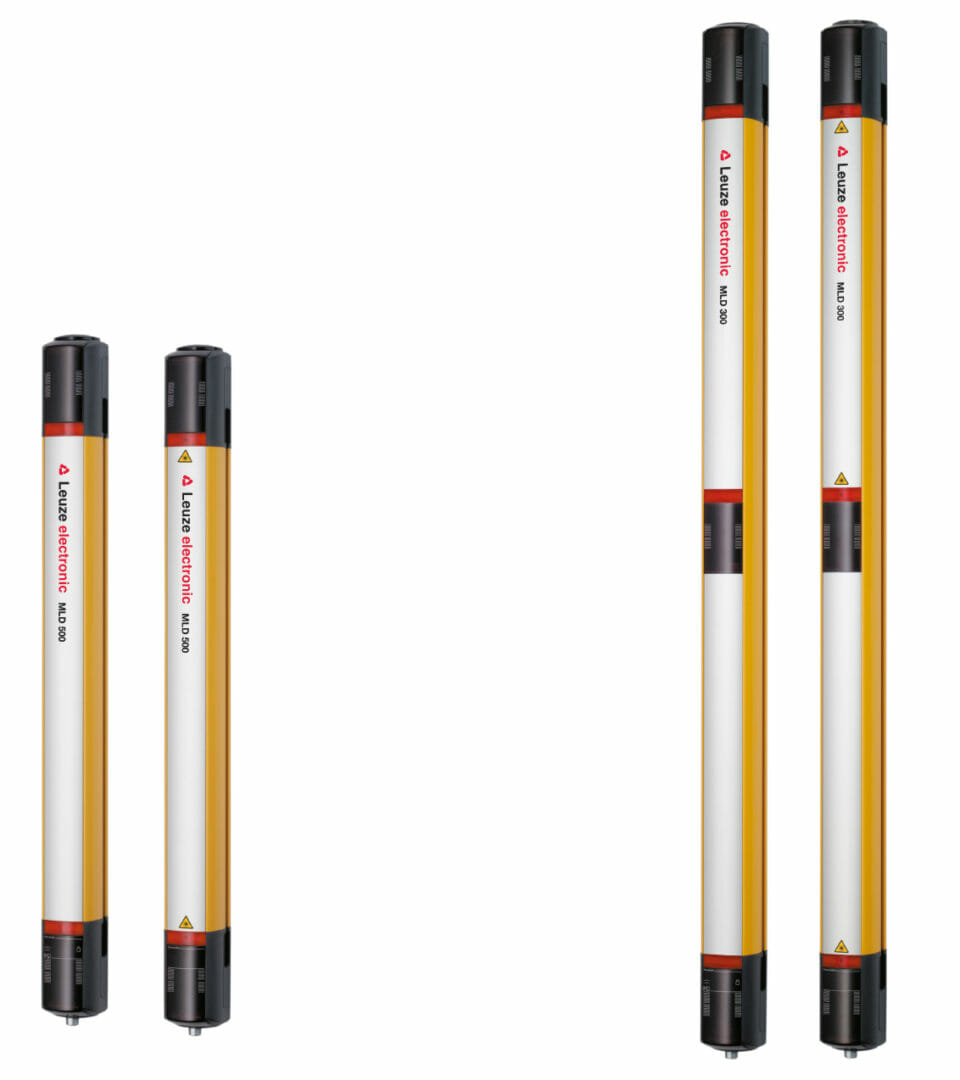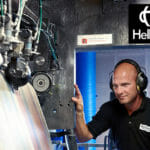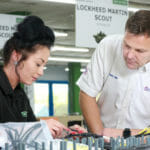2- OR 3-BEAM PROTECTIVE SENSORS?
Multiple light beam safety devices are used for access guarding at machines and systems. The required arrangement for these protective devices is described in the harmonized standard EN ISO 13855, which replaced the previous version EN 999 in 2010.
As introduction of EN ISO 13855 has resulted in changes to details, the question repeatedly arises as to whether 2-beam safety light barriers can still be used on new machines. For existing machines, the question is whether 2-beam systems have to be replaced by 3-beam systems. This document provides recommendations in this regard.
WHEN DID EN ISO 13855 COME INTO EFFECT?
Harmonized standards are listed in the “Official Journal of the European Union”. EN ISO 13855:2010 has been listed there since November 2010 when it replaced the previous standard EN 999:1998.
WHAT HAS CHANGED?
What changes have been made in EN ISO 13855 compared to EN 999 with respect to the use of 2-beam or 3-beam protective sensors? In EN ISO 13855, beam heights are defined in order to prevent persons from both crawling under and stepping over a protective field. For this purpose, the bottom beam must not be installed higher than 300 mm above the reference plane and the top beam must not be installed lower than 900 mm above the reference plane. The values are given in the normative part in chapter 6.2.2. The table from EN 999 with the predefined combination of number of beams and beam height has been moved to informative appendix E of EN ISO 13855. Technically, the table is therefore no longer part of the standard.
WHY, ACCORDING TO EN ISO 13855, IS A 2-BEAM PROTECTIVE DEVICE NORMALLY INSUFFICIENT?
A 2-beam system has a beam spacing of 500 mm. If, as specified in EN ISO 13855, crawling under is to be prevented, then the lower beam must be at a height of ≤ 300 mm. The upper beam is then at a height of ≤ 800 mm; at this height, however, stepping over is possible. If the device is installed in such a way that stepping over is prevented, then the upper beam must be at a height of ≥ 900 mm. The lower beam is then at a height of ≥ 400 mm, whereby crawling under is possible. In comparison, a 3-beam system automatically satisfies both conditions, as shown in the figure below.
ACCORDING TO THE STANDARD, WHICH AREAS OF APPLICATION ARE STILL POSSIBLE FOR 2BEAM SYSTEMS?
Informative appendix E of EN ISO 13855 (technically not part of the standard) contains the following note: ‘A beam height of ≤ 400 mm for the bottom beam [see also 6.2.2.a] may be used only if the risk assessment permits this.’ In each individual case, the user must therefore be able to argue on the basis of the respective risk assessment, why a 2-beam protective device is sufficient at the location concerned. It is false to expect that EN ISO 13855 will provide any form of supporting argument.
HOW IMPORTANT ARE THE REQUIREMENTS OF TYPE C STANDARDS?
Type C standards each apply to specific machine types and are not transferable to other machine types. Type C standards have priority over type B standards, like EN ISO 13855. In the case of content-related deviations between type B and type C standards, the content of the type C standard applies, even if the most recent type C standard does not reflect the current state of the art. Type C standards too are revised at regular intervals, which generally means that changes to the current content of type B standards are to be expected.
FOR MANUFACTURERS AND INTEGRATORS:
What requirements result from the European machinery directive? The machinery directive 2006/42/EC sets out the following requirements in Appendix I Sect. 1: The manufacturer of a machine or the manufacturer’s authorized representative shall ensure that a risk assessment is carried out in order to determine the health protection and safety requirements applicable for the machine. The machine must then be designed and constructed taking the results of the risk assessment into consideration. According to the machinery directive, therefore, there is technically no obligation to refer to or comply with a standard such as EN ISO 13855. However, compliance with harmonized standards offers legal benefits.
FOR OPERATING COMPANIES:
What requirements result from the European Use of Work Equipment directive 2009/104/EC? According to the Use of Work Equipment directive, employers are obliged to provide safe work equipment. For this purpose, the hazards posed by the work equipment must be assessed at regular intervals. If the assessment identifies a hazard, the protective measures must be adapted accordingly. Conversion from a 2beam safety light barrier to a 3-beam safety light barrier is therefore necessary if the result of the hazard assessment indicates this.
SUMMARY
JJ Since 2010 (EN ISO 13855), 2-beam safety light barriers no longer correspond to the state of the art. They should be used or continue to be used only if the risk assessment, the hazard assessment or the most recent type C standard for the used machine type permits this.
More than 50 years experience have made Leuze electronic real experts in innovative and efficient sensor solutions for industrial automation. Its main focus is on the areas of intralogistics, packaging industry, machine tools and automotive industry as well as laboratory automation. The product range includes switching and measuring sensors, identification systems, solutions for image processing and data transmission and also occupational safety components and systems. Leuze electronic was founded in 1963 at the current headquarters of the sensor system manufacturer in Owen/Teck, southern Germany. With its extensive international sales and service network, competent consulting and reliable customer service, Leuze electronic serves customers worldwide. More than 1200 sensor people at 22 locations are involved in development, production, sales and service – supported by more than 40 sales partners around the world. Every single day, each one of them delivers the Smart Sensor Business promise to their customers: to think easy, share experience, offer proximity and create the future: www.smart-sensor-business.com.
Gary Hockin General Manager and Director UK Tel: 01480 408 500 Email: [email protected] Leuze Electronic Ltd Terek House Phoenix Park St. Neots Cambridgeshire PE19 8EP
Leuze Electronic Pty Ltd Unit 2, 843 Mountain Hwy, Bayswater VIC 3153 Australia Sandra McNabb Phone: 1300 538 933 Fax: [email protected]








